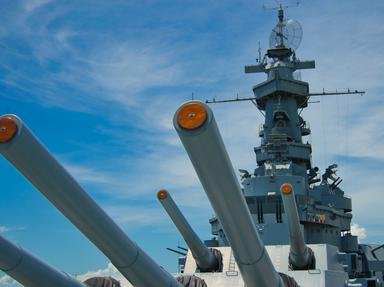Quiz Answer Key and Fun Facts
1. On 17 December 1939, the cruiser Admiral Graf Spee was scuttled outside the harbour of which South American city?
2. The German invasion of Norway saw the bulk of its surface fleet split into groups. On 9 April 1940, the heavy cruiser Blucher, leading one of these assault groups, was sunk during the attempt to capture which city?
3. On 18 May 1941, the battleship Bismarck was dispatched on its first deployment. Nine days later, on 27 May, the ship was sunk during efforts to reach which French port?
4. Having been deployed to Norway on 26 December 1943, the battleship Scharnhorst was lost following a battle off which point on the Arctic Ocean?
5. By late 1944, the battleship Tirpitz was one of the few remaining major surface units of the German Navy still operational. On 12 November, she was sunk in a bombing raid while stationed close to which Norwegian city?
6. Having been laid up for more than two years, on 27 March 1945 the battleship Gneisenau was scuttled to serve as a blockship preventing entry to which port city in occupied Poland?
7. By the last weeks of the war, most of the German Navy's major units were vulnerable to bombing. On 9 April 1945, the cruiser Admiral Scheer was sunk in a bombing raid on which German port?
8. Seven days after the loss of her sister ship in an air attack, on 16 April 1945 the cruiser Lutzow suffered the same fate at which port in German occupied Poland?
9. The last major surface unit of the German Navy to be lost during the war itself was the heavy cruiser Admiral Hipper when, on 3 May 1945, after suffering severe damage during a bombing raid, she was scuttled in which German port?
10. The heavy cruiser Prinz Eugen was one of just two large surface ships to survive the war relatively unscathed. Following the end of the war, she was turned over as a war prize to which of the victorious Allied powers?
Source: Author
Red_John
This quiz was reviewed by FunTrivia editor
trident before going online.
Any errors found in FunTrivia content are routinely corrected through our feedback system.
